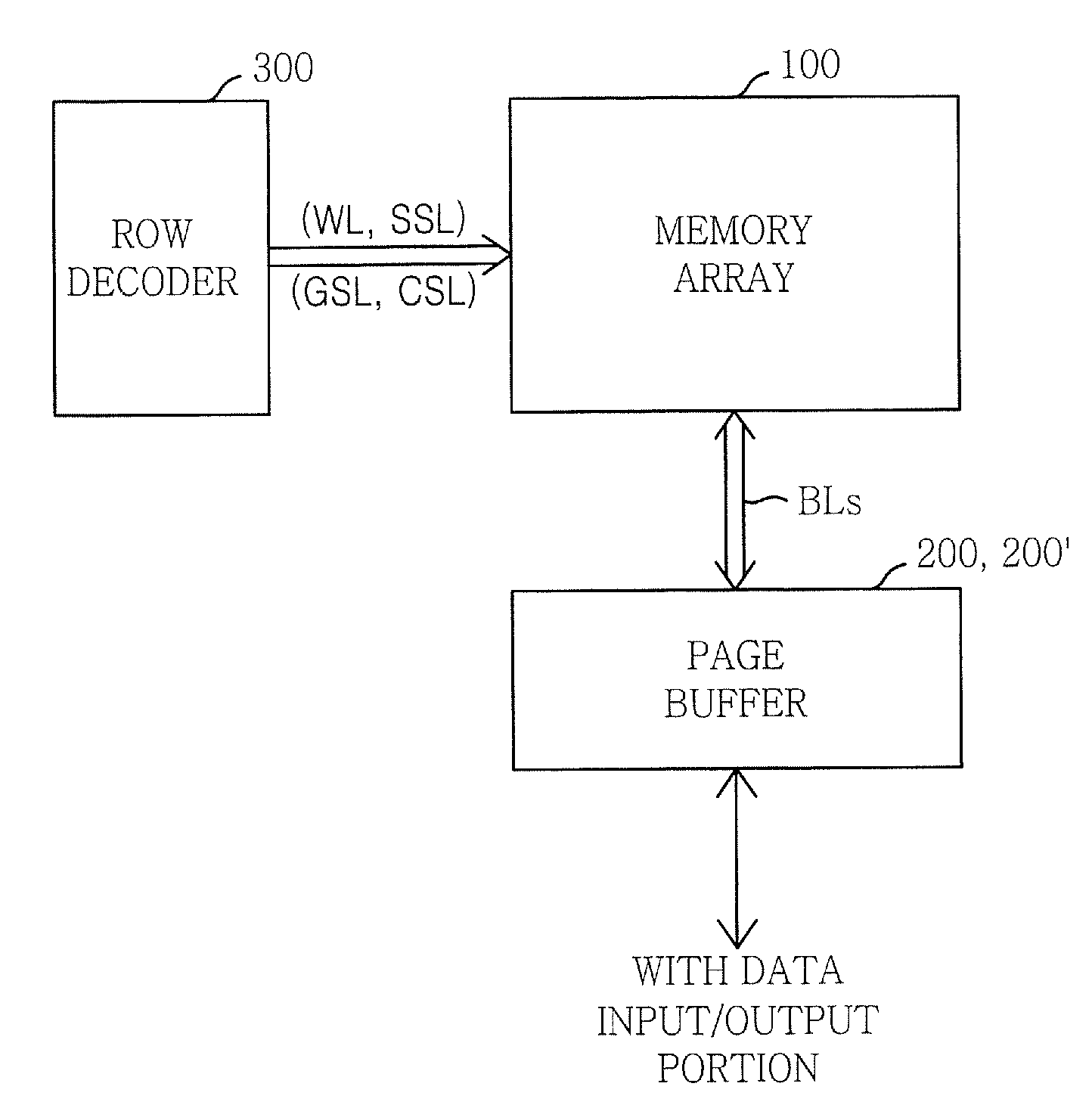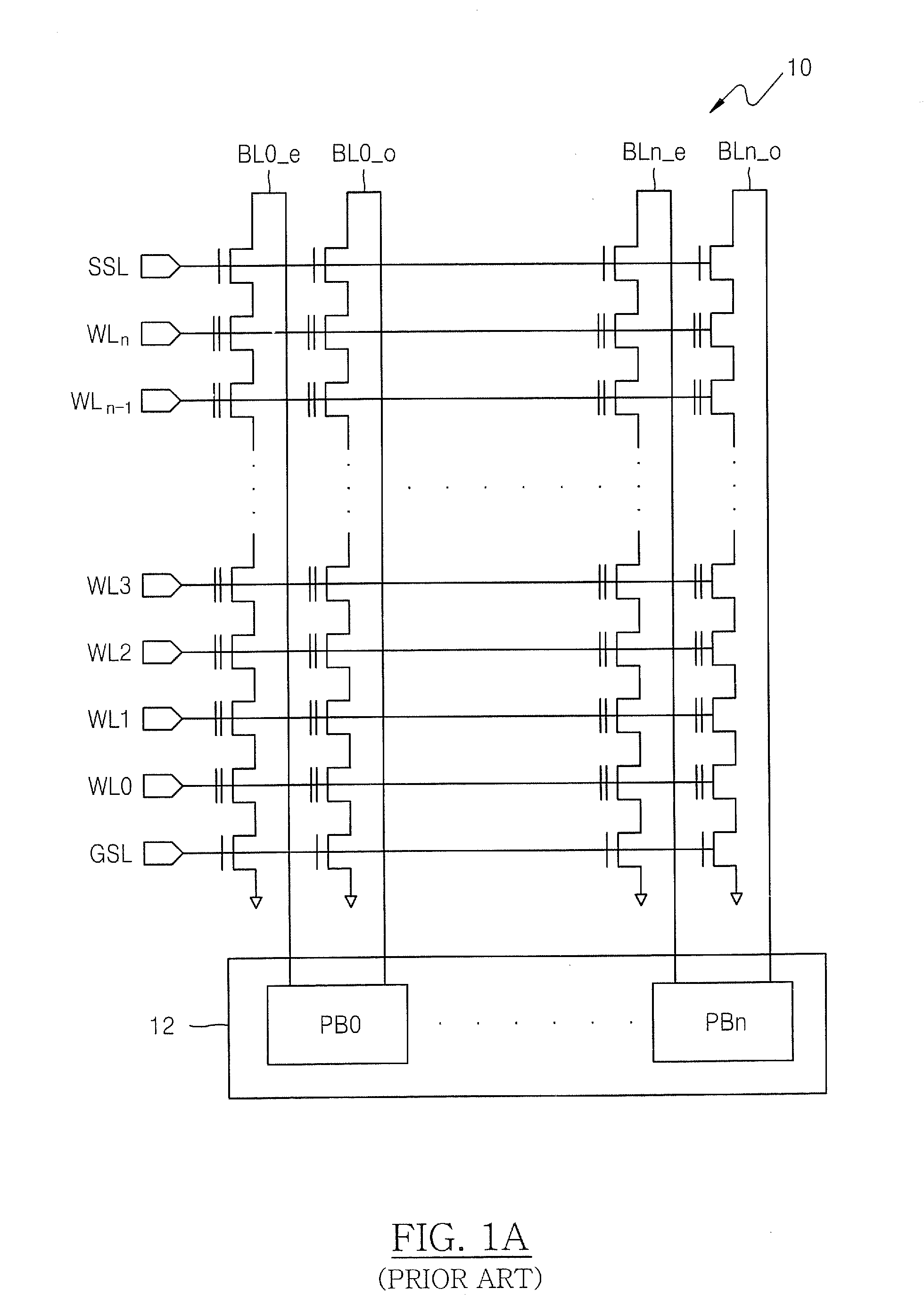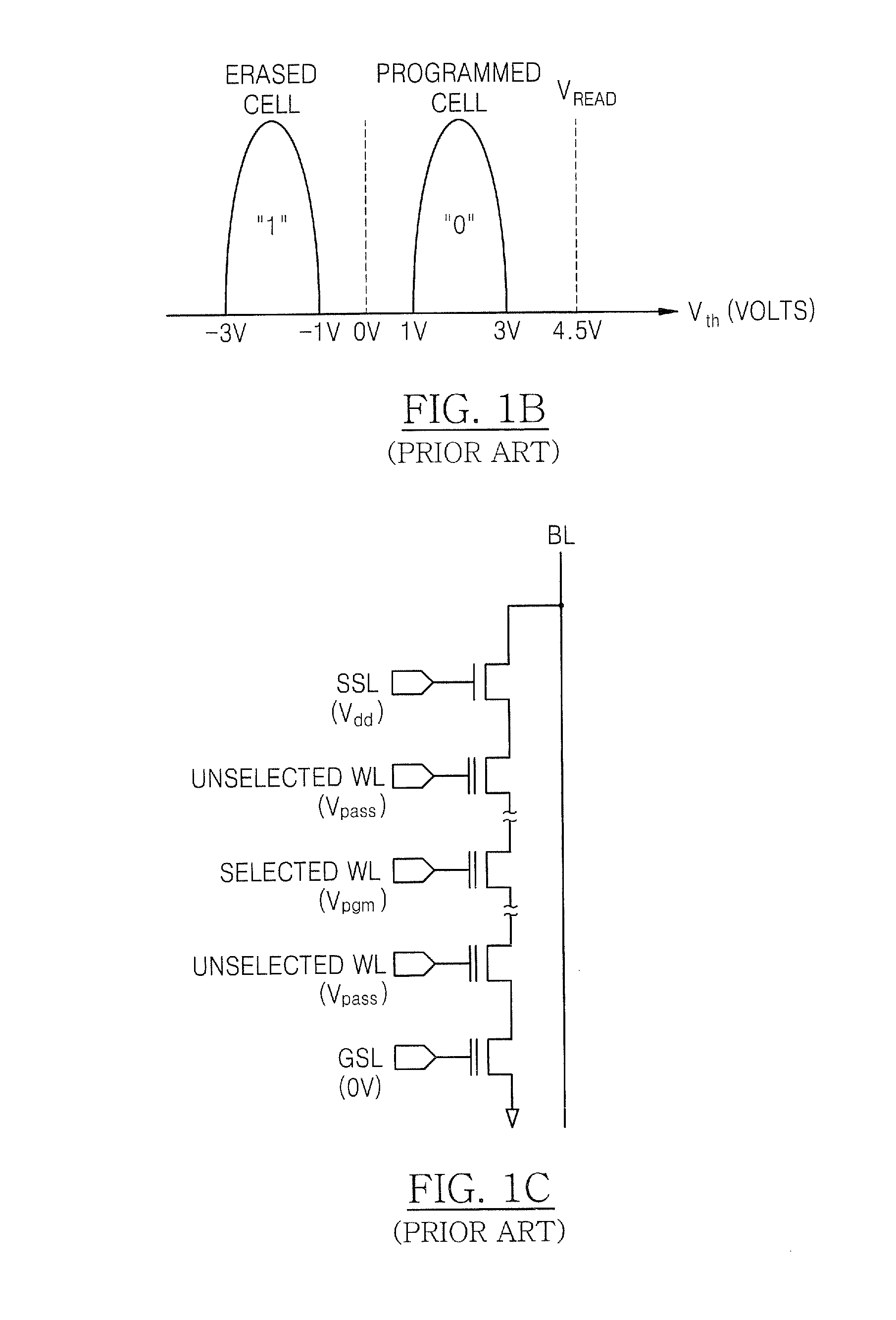Non-Volatile Memory Devices that Utilize Mirror-Image Programming Techniques to Inhibit Program Coupling Noise and Methods of Programming Same
a non-volatile memory device and programming technique technology, applied in static storage, digital storage, instruments, etc., can solve problems such as 3-bit data errors, and achieve the effect of reducing coupling noise and improving data storage reliability
- Summary
- Abstract
- Description
- Claims
- Application Information
AI Technical Summary
Benefits of technology
Problems solved by technology
Method used
Image
Examples
Embodiment Construction
[0032]The present invention now will be described more fully herein with reference to the accompanying drawings, in which preferred embodiments of the invention are shown. This invention may, however, be embodied in many different forms and should not be construed as being limited to the embodiments set forth herein; rather, these embodiments are provided so that this disclosure will be thorough and complete, and will fully convey the scope of the invention to those skilled in the art. Like reference numerals refer to like elements throughout and signal lines and signals thereon may be referred to by the same reference characters. Signals may also be synchronized and / or undergo minor Boolean operations (e.g., inversion) without being considered different signals.
[0033]As shown in FIG. 4, a 3-level memory cell (MC) has three kinds of threshold voltage groups. The threshold voltage groups of the memory cells MCs can be classified based on a first reference voltage VR1 and a second ref...
PUM
 Login to View More
Login to View More Abstract
Description
Claims
Application Information
 Login to View More
Login to View More - R&D
- Intellectual Property
- Life Sciences
- Materials
- Tech Scout
- Unparalleled Data Quality
- Higher Quality Content
- 60% Fewer Hallucinations
Browse by: Latest US Patents, China's latest patents, Technical Efficacy Thesaurus, Application Domain, Technology Topic, Popular Technical Reports.
© 2025 PatSnap. All rights reserved.Legal|Privacy policy|Modern Slavery Act Transparency Statement|Sitemap|About US| Contact US: help@patsnap.com



